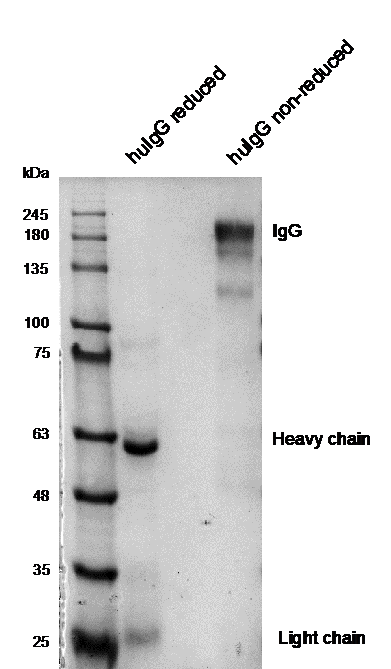
Cat. #151090
Anti-EGFR [EGFR1]
Cat. #: 151090
Sub-type: Primary antibody
Unit size: 100 ug
Availability: 1-2 weeks
Target: Epidermal Growth Factor Receptor (EGFR, Her1)
Class: Monoclonal
Application: FACS ; IHC ; IF ; IP ; WB
Reactivity: Human
Host: Mouse
£300.00
This fee is applicable only for non-profit organisations. If you are a for-profit organisation or a researcher working on commercially-sponsored academic research, you will need to contact our licensing team for a commercial use license.
Contributor
Inventor: Peter Goodfellow
Institute: Cancer Research UK, London Research Institute: Lincoln's Inn Fields
Tool Details
*FOR RESEARCH USE ONLY (for other uses, please contact the licensing team)
- Name: Anti-EGFR [EGFR1]
- Alternate name: CCNA1; Cyclin A1; Testicular Tissue Protein Li 34; CT146
- Research fields: Cancer;Cell signaling and signal transduction
- Clone: EGFR1
- Tool sub type: Primary antibody
- Class: Monoclonal
- Conjugation: Unconjugated
- Molecular weight: 175 kDa
- Strain: Balb/c
- Reactivity: Human
- Host: Mouse
- Application: FACS ; IHC ; IF ; IP ; WB
- Description: Monoclonal antibody which binds EGFR1 tyrosine kinase, commonly mutated in a range of cancers.
- Immunogen: Human epidermoid carcinoma line A431
- Immunogen uniprot id: P00533
- Isotype: IgG2b kappa
- Myeloma used: P3/NS1/1-Ag4.1
Target Details
- Target: Epidermal Growth Factor Receptor (EGFR, Her1)
- Molecular weight: 175 kDa
- Target background: The EGFR family of type I growth factor receptor tyrosine kinases includes EGFR (HER1), c-erbB2 (HER2; neu), c-erbB3 (HER3) and c-erbB4 (HER4). EGFR activation signals multiple downstream signalling cascade pathways such as the Ras - ERK, PI3-K - Akt, Jak - STAT and PKC pathways which help in growth and proliferation of cells. Dysregulation of EGFR signalling as a consequence of overexpression, amplification and mutation of the EGFR gene occurs frequently in several types of cancers, including head and neck, brain, bladder, stomach, breast, lung, endometrium, cervix, vulva, ovary, oesophagus, stomach and in squamous cell carcinoma. Tumours become dependent on EGFR signalling to maintain their malignant phenotypes.
Applications
- Application: FACS ; IHC ; IF ; IP ; WB
Handling
- Format: Liquid
- Concentration: 1 mg/ml
- Unit size: 100 ug
- Storage buffer: PBS with 0.02% azide
- Storage conditions: Store at -20° C frozen. Avoid repeated freeze / thaw cycles
- Shipping conditions: Shipping at 4° C
Related Tools
- Related tools: Anti-EGFR, Recombinant [EGFR1]
References
- Finetti et al. 2015. Endocr Relat Cancer. 22(4):665-78. PMID: 26113609.
- Perillo et al. 2015. Nat Commun. 6:7874. PMID: 26219252.
- Tang et al. 2015. Oncol Rep. 34(1):350-8. PMID: 25955689.
- Boersma et al. 2011. J Biol Chem. 286(48):41273-85. PMID: 21979953.
- Jensen et al. 2006. Proc Natl Acad Sci U S A. 103(32):11958-63. PMID: 16877544.
- Gullick et al. 1986. Cancer Res. 46(1):285-92. PMID: 2998607.
- Waterfield et al. 1982. J Cell Biochem. 20(2):149-61. PMID: 6188757.


